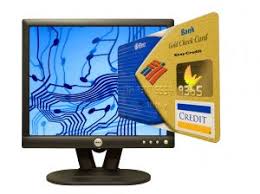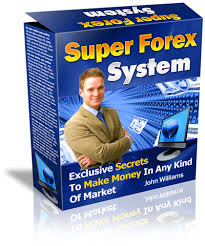Marketiva Corporation (
http://www.marketiva.com/). Marketiva is a foreign exchange (forex) dealer where people can start trading with as little as $1 and learn how to successfully participate in the largest financial market in the world.
We shall provide in this article an overview of the colorful history of the foreign exchange market. The foreign exchange market as we know it today is the sheer outgrowth of the flexible exchange rate regime, which was officially mandated by the International Monetary Fund, IMF for short, in 1978.The shift from a fixed to a flexible or floating exchange rate system was adopted in consequence of the failure of previously implemented international monetary systems, specifically, the Gold Exchange Standard, the Bretton Woods Accord, and the Smithsonian Agreement, to sustain international economic stability.
THE GOLD EXCHANGE STANDARD
The predominant international monetary system until 1944. Under this system, currencies were pegged to the price of gold, and a nation's economy would incur sharp cyclical periods of economic booms and busts. For instance, when a nation's economy was strong, its imports would increase until the gold reserves were depleted because a nation had to redeem its notes in gold. Money supply would drop in turn since the value of its currency was a function of its reserves of gold. In addition, interest rates would soar high, leading to an economic recession and less demand for money, meaning borrowers find it costly to borrow funds from lending institutions. The prices of that nation's exports would eventually become attractive to foreigners who would
ultimately engage in a buying frenzy of its export goods. This demand for that country's exports would inject more gold reserves into the nation's economy and lead to an economic expansion. This monetary system was superseded by the Bretton Woods system as it failed to maintain international economic order.
BRETTON WOODS ACCORD
In 1944, The United Nations Monetary Fund convened in Bretton Woods, New Hampshire in the United States with delegates from the United States, Britain, and France to set up rules and institutions to regulate the international monetary system. The International Monetary Fund was founded and became fully operational a few years later. National currencies were fixed to the US dollar and the US dollar was also pegged to gold at 35 dollars per ounce. The US dollar became the benchmark and the reserve currency for major economies since the United States was the only nation which was not scarred by war. The British economy was destroyed and many counterfeits of the British Pound were being circulated by Nazi Germany. Hence, the British Pound could no longer serve as a reserve currency to which other currencies could be compared.
Under the Bretton Woods system, currencies were allowed to fluctuate one percentage point from a fixed or par value and an equivalent rate in terms of the price of gold. In addition, the goal of the Bretton Woods conference was to prevent cross border money flight and restrain speculative demands for a currency. Also, countries were not allowed to devalue their currencies by less than 10 percent in order to stimulate demand for their exports. The Bretton Woods accord collapsed in 1973 as a result of substantial movements of capital during the post-war reconstruction period, which led to destabilization of currency rates and economic crises in several nations. There are several theories which account for the collapse of the Bretton Woods system, namely, marginal tax rates, budget deficit, and the government expenditure on the Vietnam War.
SMITHSONIAN AGREEMENT
An adjustment to the Bretton Woods Agreement, which was signed by member countries of the GROUP OF TEN at the Smithsonian Institution in Washington, D.C in USA in 1971. This accord included the adoption wider floating ceilings and floors of plus or minus 2.25 percent of a fixed or par value. Furthermore, member countries appreciated their currencies vis-a-vis the US dollar. On August 1971, the US dollar was devalued and the United States abandoned the system of convertibility of the US dollar into gold. The value of gold was also increased to 38 dollars an ounce, which meant a devaluation of the US dollar. The price of gold reached even higher prices a few years later.
The US dollar was over-valued in 1970 owing to excessive government spending on the Vietnam War and a high inflation rate. This monetary system was doomed to crash as it failed to preserve order in international trade.
FREE FLOATING EXCHANGE RATES
During that time, another regional monetary system was implemented in Europe, namely, The European Monetary System, which was created in 1978. European currencies were pegged to one another, mainly the ones showing strength, in an attempt to gain independence from the US dollar. However, the EMS failed as well when the Bank of England failed to stabilize its currency, which was subjected to downward pressure from private speculators, and England withdrew from the EMS. The Forex Market deregulation was deemed to be a necessity at best seeing that the International Monetary Fund mandated its application in 1978. A currency may be traded by anyone, and its value is a function of the forces of supply and demand.
Increased volatility of currency rates continued to prevail on the Forex market with the advent of free trade agreements, new financial instruments and technological advances in the eighties, such as the personal computer. The Forex market became so large that even governments cannot control exchange rates anymore as a significant size of transactions is in the hand of private traders. It is estimated that the daily turnover of the foreign exchange market reaches more than 2 trillion dollars. The year 1998 marks the start of online retail Forex trading and currencies can be bought and sold by any individual investor.
UNDERSTANDING FOREX
If New York is considered to be the largest center of equity trading, it only ranks second to London, which is considered to be the most active trading session in the Forex universe in terms of volumes. When the US and European session overlap, volume reaches the highest levels. Forex travels with the sun around the world. Trading begins in New Zealand, and then moves to Sydney, Tokyo, Hong Kong, Singapore, Frankfurt, London, and New York. Forex is a seamless 24 hour market and hence it is free of market opening and closing gaps unlike the equities markets. Currency traders are must continuously monitor countries news and events related to currency pairs they trade.
For example, an investor trading the pair EUR/USD should constantly examine the latest news and events relating to the macroeconomic performance of both the Euro zone and the US. Currency traders can react to news and events around the world and make informed decisions based on the latest news before decidinh which positions to take.
The Forex daily turnover exceeds 2 trillion dollars, which means that the Forex can dwarf all the equities markets combined together. The Forex is an over the counter market, or OTC market for short, meaning that trading Forex is not centralized on a single exchange; rather trading is conducted via computer terminals at major banks and dealer/broker houses, a reason for which the Forex is sometimes referred to as the inter-bank system.
Forex is a true network of dealers (banks and market makers) each quoting their bid and offer (ask) rates. Bid is the price at which a dealer is willing to buy the base currency, and ask, or offer, is the price at which a foreign exchange dealer is willing to sell a base Currency. There are Forex dealers in every time zone and in every financial center in the world. Dealers make profits from their spreads, or the difference between bid and offer rates. Market participants in the Forex include institutional and individual investors. Corporations with international operations trade the Forex to hedge currency fluctuations risk. The US Federal Reserve System and other countries central banks participate in the Forex through their monetary policies by increasing or decreasing interest rates, which in turn has an impact on the money supply in their countries. Central banks also engage in the buying and selling of foreign reserves to guard against severe fluctuations in their currencies and to stabilize their macroeconomic performance. International banks, hedge funds, large commodity trading advisors (CTAs), and private traders play the Forex as well.
It is estimated that 95 percent of Forex transactions are speculative in nature and only 5 percent represent hedging activities against currency rates fluctuations. Major currencies are the most commonly traded currencies in the Forex and they account for nearly 85 percent of total volume. Potential for making profits exists 24 hours a day as one currency of each pair is gaining and the other is losing. Currencies are traded in lots, or quantities. Leverage makes the Forex market an attractive investment vehicle as traders can control larger funds than they can actually afford. For instance, the minimal required investment amount in the equities markets is 25000 dollars. Marketiva offers a 1:100 leverage, which means that an investor can control a quantity 100 times larger than his investment. Leverage does play a role of amplifying profits and losses but does not make Forex any riskier than any other financial market as the risk to reward ratio is only 1 percent. Currency traders geared with appropriate money management skills, knowledge of the basics of technical analysis and fundamental analysis stand to make profits in the Forex market. Forex investors must be big picture individuals and information is available to enable them to react to events on time.
It is estimated that more than 95 percent of currency traders have no prior knowledge of the aforementioned methodologies of analyzing the market and hence experience major draw downs in their equities. The Forex market is the most liquid market and traders can enter and exit trades with ease. There are always buyers and sellers of a currency pair and a currency trader would never have to worry about finding a buyer or a seller of his pair because there is no market interest.
Again, we suggest you to trade with virtual money for as long as possible, before trading your own funds. We will continue this practice of sending educational e-mails in order to help you obtain further knowledge about the foreign exchange market.









